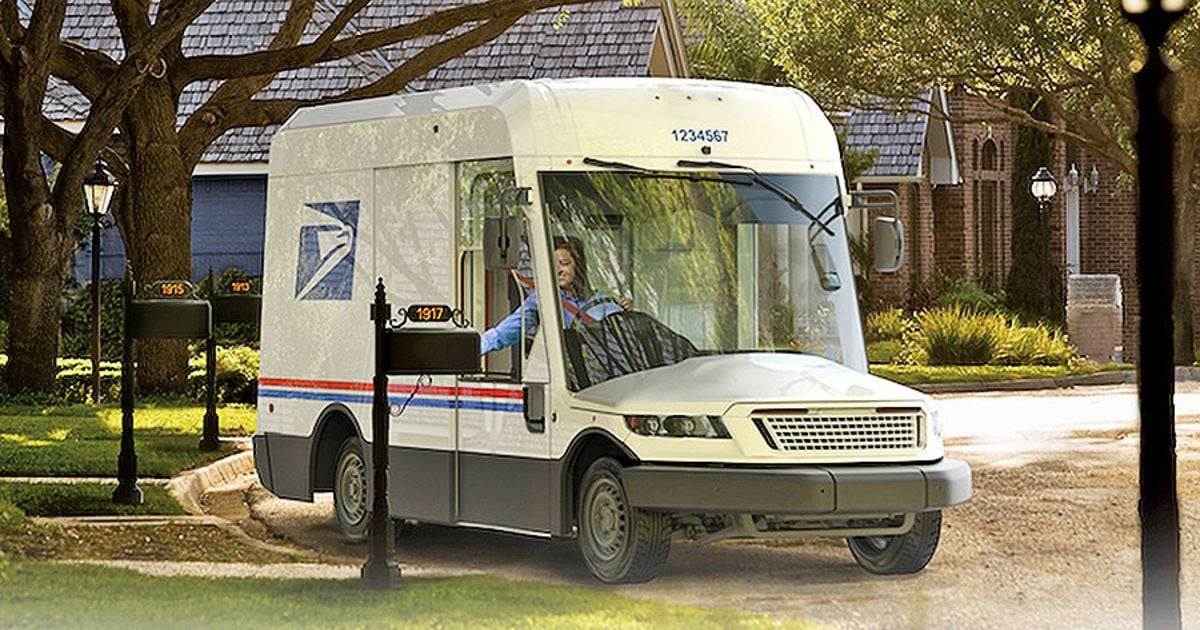
Efforts to push and prod the U.S. Postal Service into ensuring electric vehicles make up a greater portion of its new mail truck fleet have delivered.
The agency said Tuesday it will purchase more EVs through 2028 than initially anticipated. In total, 66,000 EVs will be included in the Postal Service’s overall plans to buy 106,000 vehicles between now and 2028.
There had been uncertainty surrounding the agency’s willingness to further commit to electrifying the largest and oldest vehicle fleet owned by the U.S. government. But in August, Congress essentially directed the Postal Service to electrify most of its new mail truck fleet by approving $3 billion in the Inflation Reduction Act for such purchases.
With Democrats retaining control of the Senate in the 2022 midterm elections, and the Biden administration requesting the Postal Service further examine its plan to buy primarily gasoline-powered vehicles, it had appeared more EVs were on the horizon.
“The USPS plan leverages the $3 billion provided by the Inflation Reduction Act to hit the target of 100 percent electric delivery vehicle purchases in 2026 [and] sets the postal fleet on a course for electrification,” John Podesta, senior adviser to President Joe Biden, said Tuesday.
In March, the Postal Service’s initial 50,000-vehicle order from Wisconsin’s Oshkosh Defense, which won a 10-year contract worth up to $11 billion, had included 10,000 EVs. The agency then said it would increase its EV buy to 25,000 with commercial off-the-shelf vehicle purchases.
After the passage of the Inflation Reduction Act, the Postal Service’s silence on increasing its electrification commitments set off a round of lobbying and legal maneuvers that included a joint lawsuit from the UAW and the Natural Resources Defense Council and letters from members of Congress.
The Postal Service will now increase its initial order of Next Generation Delivery Vehicles to 60,000, of which 45,000 will be EVs by 2028. All vehicles ordered by the agency after 2026 are expected to be entirely EVs.
The agency expects to spend $9.6 billion, including the $3 billion from Inflation Reduction Act funds, on its new fleet.
“The $3 billion provided by Congress has significantly reduced the risk associated with accelerating the implementation of a nationwide infrastructure necessary to electrify our delivery fleet,” said U.S. Postmaster General Louis DeJoy. “While most of the electric vehicle funding will continue to come from Postal Service revenues, we are grateful for the confidence that Congress and the Administration have placed in us to build and acquire what has the potential to become the largest electric vehicle fleet in the nation.”
The Postal Service said it would also explore the possibility of achieving 100 percent electrification of its fleet and work to reduce its carbon emissions through logistics improvements and reduced transportation costs.
“A key focus of our modernization effort is to reduce inefficient transportation and improve distribution operations, resulting in far less air cargo and far fewer truck trips,” DeJoy said.
“When combined with our substantial commitment to the electrification of our delivery vehicles, the Postal Service will be at the forefront of our nation’s green initiatives.”